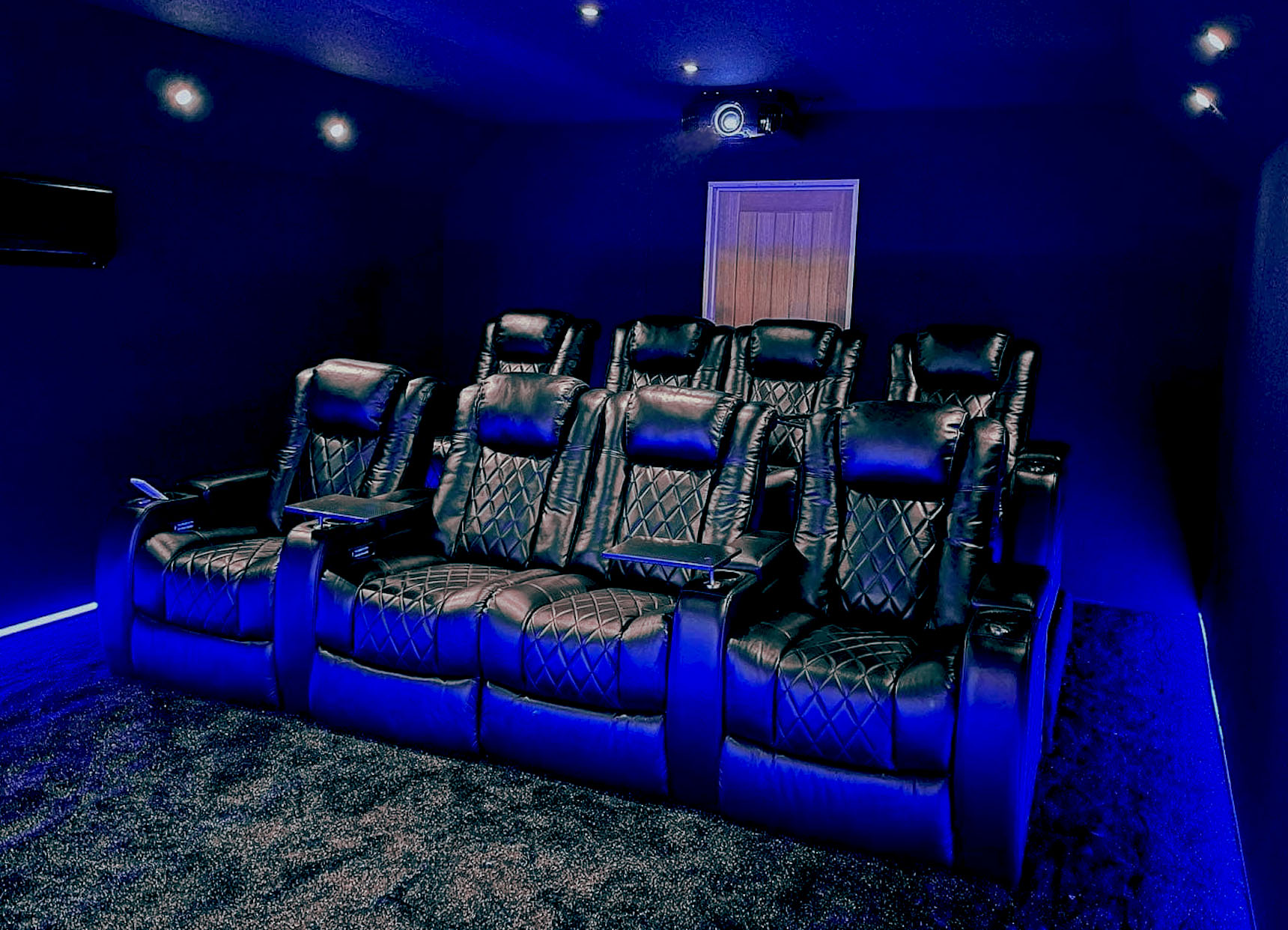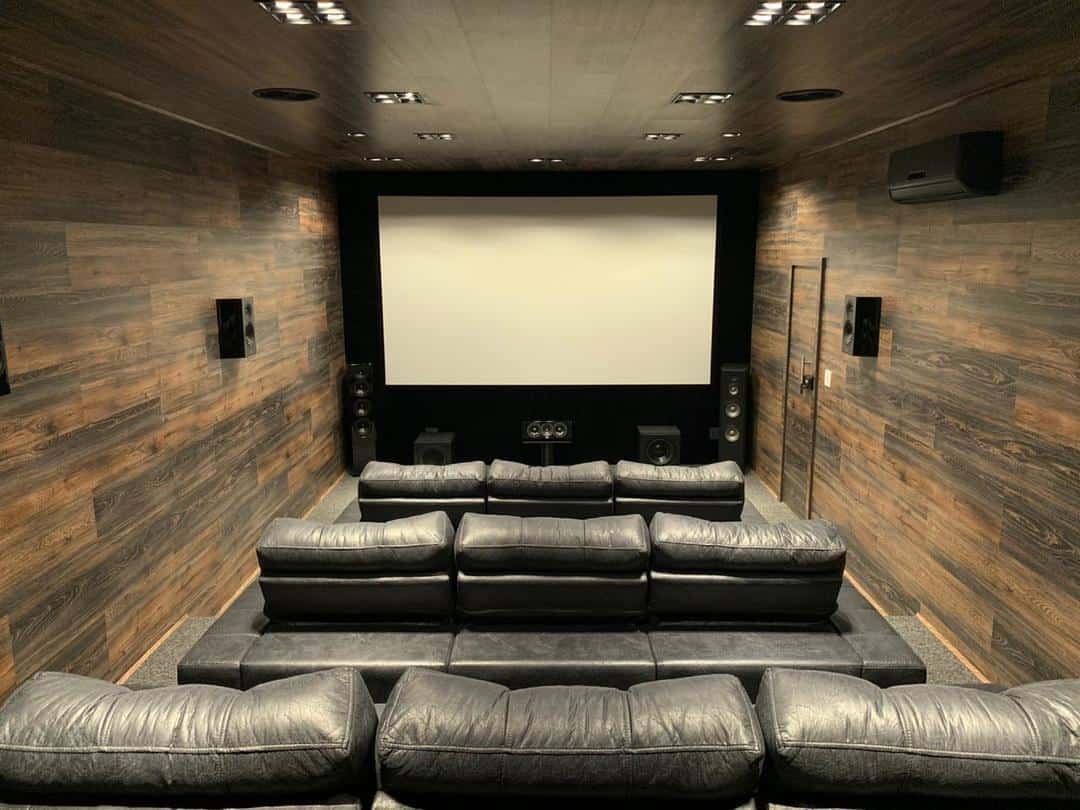The Complete Guide to Home Theater Installation Tampa Homeowners Trust
The Complete Guide to Home Theater Installation Tampa Homeowners Trust
Blog Article
Home Theater 101: Every Little Thing You Need to Know for a Motion Picture Experience in the house
Producing a home cinema that equals the cinematic experience of an industrial theatre includes careful factor to consider of numerous parts, including screen selection, sound systems, and space design. Each element plays an essential duty in attaining the wanted atmosphere and functionality. Whether you are contemplating the perfect display dimension or the complexities of surround audio, recognizing these fundamentals is crucial. As we discover these vital parts, it becomes evident that the choices made can considerably affect your overall viewing experience, leaving one to contemplate how these decisions will form your individual cinema.
Choosing the Right Screen
When setting up a home movie theater, picking the best display can make or break the seeing experience - home theater installation tampa. The screen offers as the centerpiece of your configuration, influencing photo top quality, checking out angles, and overall visual. Key elements to think about consist of display resolution, type, and dimension
First, determine the proper screen size based on your area dimensions and seating range. Next off, choose in between numerous display kinds, such as fixed-frame, mechanized, or retracting screens, each offering distinct advantages.
Resolution is another vital element. For an absolutely immersive experience, think about a display designed for 4K or perhaps 8K material, guaranteeing intensity and clearness. In addition, think about the screen's gain, which affects illumination and contrast; a greater gain can improve brightness in well-lit areas, while a lower gain might be better for darker settings.
Choosing Audio Equipment
Audio equipment is a critical component of any kind of home movie theater system, substantially enhancing the total viewing experience. The choice of audio equipment can figure out the depth, clearness, and immersion of audio, vital for producing a cinematic environment.
When selecting audio equipment, think about a surround audio system, which usually consists of a receiver, multiple speakers, and a speaker. A 5.1 or 7.1 channel system is suggested, where the very first number stands for the audio speakers and the second the speaker, giving an immersive soundscape. The receiver is the heart of the system, managing audio and video signals, and must sustain modern styles like Dolby Atmos for an enhanced spatial experience.
Quality audio speakers are necessary; search for versions that provide a well balanced sound profile with excellent bass reaction. Floor-standing audio speakers can create richer audio, while shelf choices conserve space. Furthermore, take into consideration wireless choices for ease of setup, although wired systems typically provide remarkable efficiency.

Ideal Seating Plans
Creating an excellent home theater experience pivots significantly on optimal seating plans. The arrangement of seats plays a vital duty in both convenience and viewing quality, straight affecting the overall cinematic experience.
First, think about the screen dimension and viewing distance. A common guideline is to place seats at a distance approximately 1.5 to 2.5 times the angled size of the display. This guarantees an immersive experience without stressing the eyes.
Next, elevation is vital. If your seating remains in a tiered style, the back rows need to be more than the front to avoid obstructions. For flat seats, ensure that the front row is not also close to the screen, and that everyone has a clear line of sight.
Additionally, think about the setup in regards to social dynamics. Group seats can boost the common experience, while private seats may be favored for personal watching.

Finally, focus on comfort with ergonomic seats that sustains prolonged watching periods. Including recliners or cushioned seats can substantially enhance the experience, making the home theater a preferred destination for both amusement and relaxation.
Lighting and Atmosphere
Reliable lights and atmosphere are essential parts of a well-designed home theater, as they substantially affect the viewing experience. The ideal illumination can improve the cinematic feel, while inadequate options can take away from it. For optimal outcomes, take into consideration a split lights technique that consists of ambient, task, and accent lights.
Ambient lighting supplies general illumination, making certain that the room is not entirely dark, which can strain the eyes. Dimmer switches are highly advised, permitting adjustments based upon the content being viewed. Job lights, such as wall sconces or floor lights, uses useful lighting for tasks like analysis or navigating the area without interfering with the general environment.
Accent lighting can be utilized to highlight architectural attributes or produce centerpieces, adding deepness and interest to the room. LED strip lights behind screens or along racks can give a subtle radiance that boosts the visual experience without overwhelming the viewer.

Wiring and Installation Tips
A well-planned wiring arrangement is important for achieving optimal efficiency in your home theater system. Correct electrical wiring browse this site not only makes certain premium audio and video clip signals yet also boosts the general aesthetic of your room. Begin by mapping out your layout, identifying where each part will certainly be placed, including your display, audio speakers, and receiver.
When picking cable televisions, focus on premium, appropriately assessed wiring to decrease signal loss. HDMI cable televisions must be used for video connections, while speaker cord ought to match the requirements of your audio speakers and amplifier. Go with in-wall ranked wires to adhere to safety standards and maintain a tidy look.

Final Thought
In recap, developing a remarkable home theater experience needs careful consideration of different aspects, consisting of screen selection, audio tools, seating plans, lighting, and wiring. By prioritizing these factors, a motion picture environment can be efficiently replicated, permitting for immersive checking out experiences that measure up to traditional movie theater setups.
Creating a home theater that matches the motion picture experience of an industrial theatre entails mindful factor to consider of numerous parts, including screen have a peek at this website choice, sound systems, and area format.When establishing up a home cinema, choosing the ideal display can make or damage the watching experience. Next off, pick between various display kinds, such as fixed-frame, mechanized, or retractable screens, each offering distinct advantages. For a truly immersive experience, think about a screen developed for 4K or even 8K content, making certain intensity and clarity.In recap, creating an you could look here extraordinary home movie theater experience requires cautious consideration of numerous aspects, consisting of screen selection, audio devices, seating plans, lights, and circuitry.
Report this page